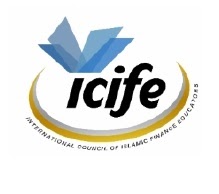
RECENTLY, an important achievement was made by ICIFE in publishing its first book (in the domain of Islamic Economics), The Islamic Currency, authored by our own Assistant Secretary, Dr. Adam Abdullah from IIUM’s Institute of Islamic Banking and Finance (IIiBF) and supported by Y.Bhg Tan Sri Rais Yatim, the President of IIUM and Chairman of ICIFE’s International Advisory Board.
Apart from seeking to clarify the Islamic monetary standard, the book also analyzes 1,300 years of gold, silver and commodity price data in Egypt, Turkey, England, America and Malaysia, in order to measure actual monetary performance of various economies over the long term. The results confirm that fiat money is the worst performing monetary system and is little more than a wealth transfer mechanism. Hence, the author proposes an Islamic monetary theory of value and Islamic equation of exchange, together with a mechanism designed to return to a high value Islamic currency, in order to achieve low prices and sustainable economic growth.
Indeed, Dr. Adam’s book was externally reviewed and subsequently endorsed by one of the founding members of ICIFE and former Dean of IIiBF, Dato’ Prof. Dr. Ahamed Kameel Mydin Meera, who said that, The Islamic Currency is “a brilliant work that analyses Islamic money using vast historical data and observation, using both qualitative and quantitative methods. This book is very timely noting the precarious situation the global monetary and financial system is in. It is a must read for every Shari’ahscholar, Islamic finance practitioner and student of Islamic Finance and should be made compulsory reading in Islamic Banking and Finance academic programmes”.
Furthermore, we are pleased to re-produce in full the forward to Dr. Adam’s book, The Islamic Currency, written by Y.Bhg. Tan Sri Rais Yatim:
Foreword to The Islamic Currency
“PEOPLE’S faith in the monetary and financial system has been eroded, especially in the mechanics of fractional reserve banking and the controversial ability to create fictional purchasing power by charging interest on money created out of nothing. This modern usurious alchemy is the hallmark of the modern fiat standard, which since 1971 has exponentially decreased the value and purchasing power of money with an equal amount of debt and inflation. With fiat money backed by debt, the economic resource cost of the fiat standard is the combined annual profits generated by the banking system for their financial intermediation. Yet, we are without a permanent medium of exchange. If all banks loans were repaid there would be no bank deposits and thus no money in circulation. With the aid of technological innovations in the financial services industry (‘FinTech’), we may appreciate that FinTech is disrupting banking, such that banks are being displaced, diminished and disintermediated by tech start-ups. This paradigm is due to a change in customer behaviour, which requires a frictionless experience at the least cost. With the advent of block chain technology and digital currencies, the issuance of money and finance are being separated. However, gold and silver are physical currencies, they are not digital. Moreover, gold and silver have no board of directors or debt. They will never rust, decay or file for bankruptcy. They boast no non-expensed stock options, off-balance sheet paper trades, conflicts of interest or accounting tricks. These two metals demand no copyright (unlike fiat currencies), rental or homage for their services. They do not suffer from power and infrastructure failures, technical disruptions to financial exchanges, hacking or on-line fraud and theft.
Earlier this year, I challenged Muslim societies to re-adopt the Islamic currency, especially in the context of South East Asia, since the majority of the population in ASEAN is Muslim. It is with much delight and congratulations to Dr. Adam Abdullah, from the IIUM Institute of Islamic Banking and Finance (IIiBF) and Assistant Secretary of the International Council of Islamic Finance Educators (ICIFE), whom took up the challenge from an academic perspective. By adopting a qualitative interpretation of Islamic texts, supported by a quantitative empirical investigation of gold, silver and price data over a span of more than 1,300 years, he has developed an Islamic monetary theory of value. This theory emphatically tells us by ignoring gold and silver in our monetary systems, we are only repeating the mistakes of the past. The Mamluks did so and the Abbasids lost their caliphate in 1517. The Ottomans did so and lost their caliphate in 1924. Ibn Khaldun and his student Al-Maqrizi were right all along: the dinar and a dirham satisfy the objectives of the Shari’ah (maqasid al-Shari’ah) in terms of wealth protection. Indeed, gold and silver are not investments, neither are they commodities – they are currency. Keynes described the gold standard in A Tract on Monetary Reform (1923) as a “barbarous relic” (Keynes, 1923:172), but in fact, the Islamic monetary theory of value, as detailed in this book, empirically disproves and rejects modern monetary theories associated with Keynes and for that matter, the quantity theory and monetarism as espoused by Friedman. Modern monetary policy has to change. It is the sovereign right of every nation to issue its own currency and not that of private mints in the form of modern banks. Over the short period of the fiatstandard, it is now clear that the world understands the failure of fiat money. Our own Treasury and Central Bank must look into this and assist in the revival of the Islamic currency. We should not be on the wrong side of history. The Islamic currency is the once and future of money, as our Prophet (s.a.w.s.) has foretold, “A time is certainly coming over mankind in which there will be nothing (left) which will be of use save a dinar and a dirham” (Imam Ahmad ibn Hanbal, Musnad).
YBhg. Tan Sri Dato’ Seri Utama Dr. Rais Yatim
Kuala Lumpur,
10 Syawwal 1437 (15 July 2016)”
The Islamic Currency is on sale now at ICIFE’s office and any of our ICIFE staff and secretariat would be happy to assist.
